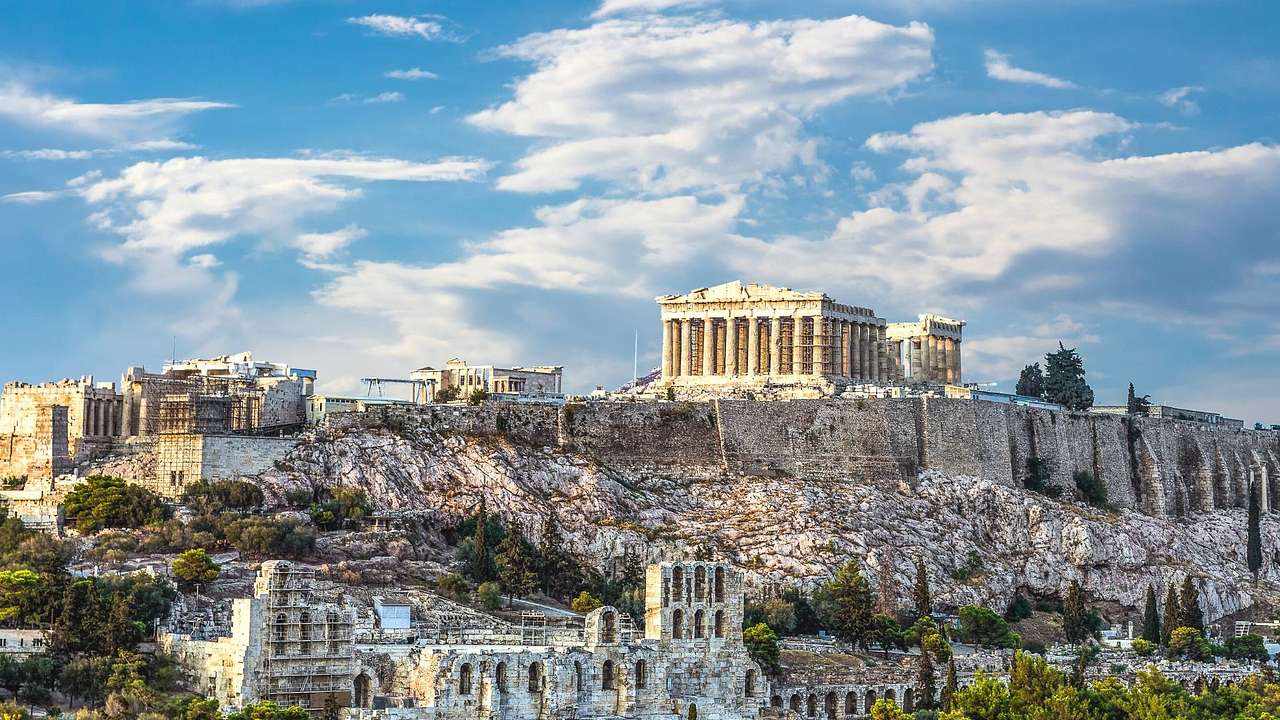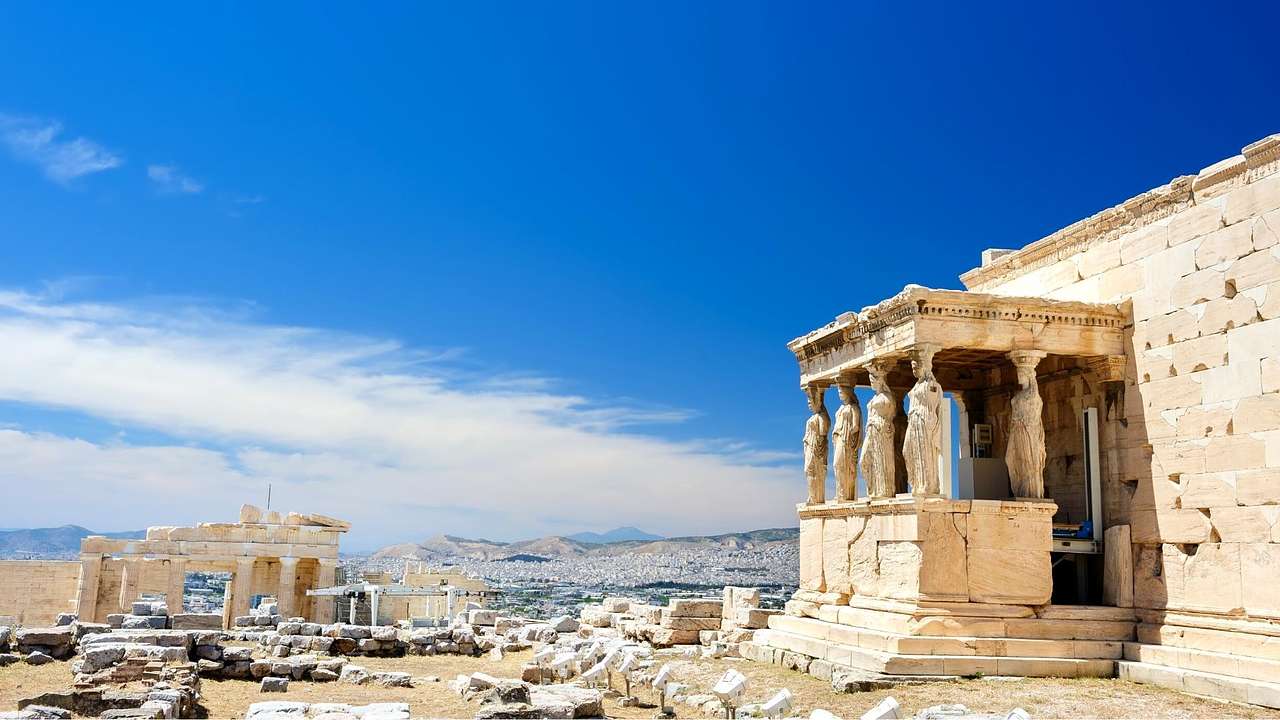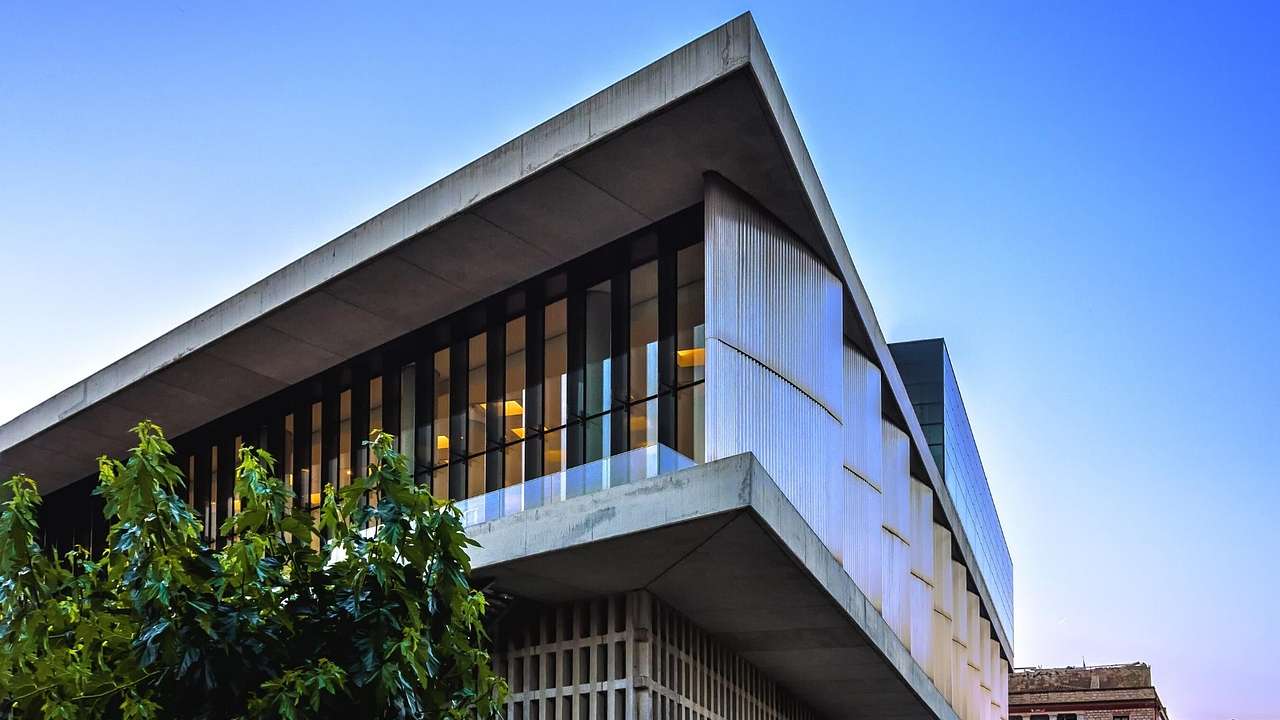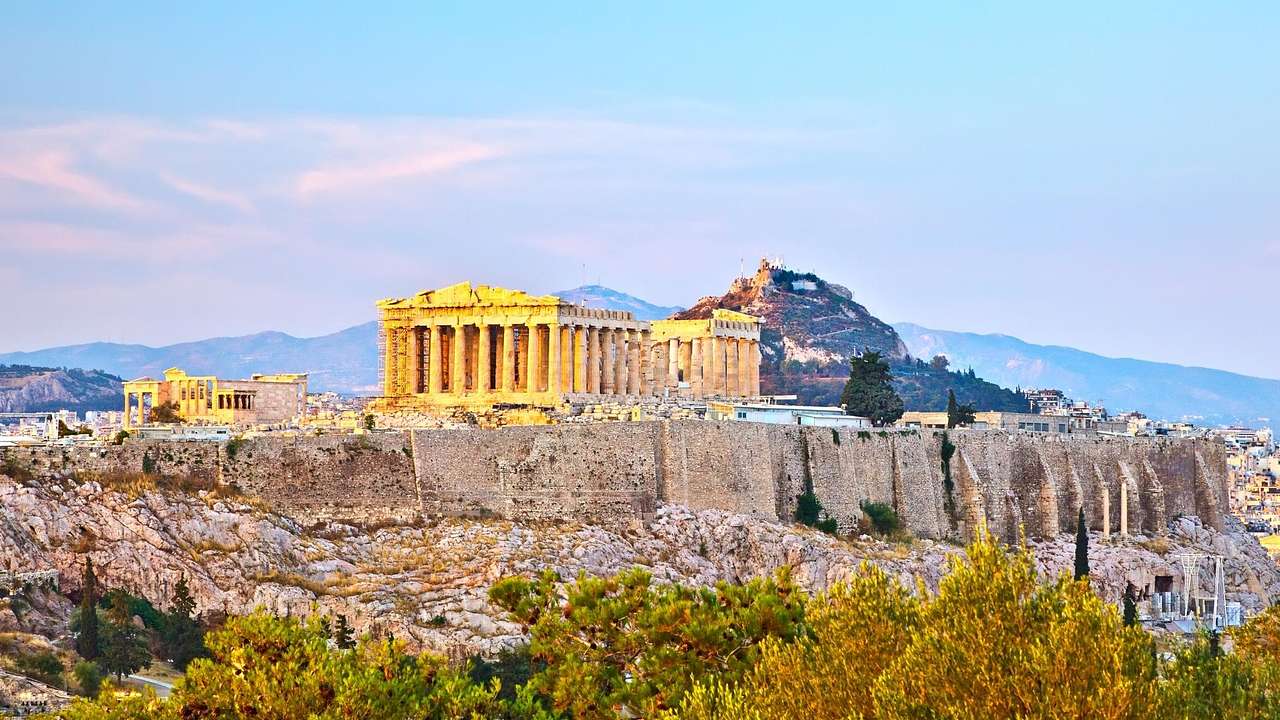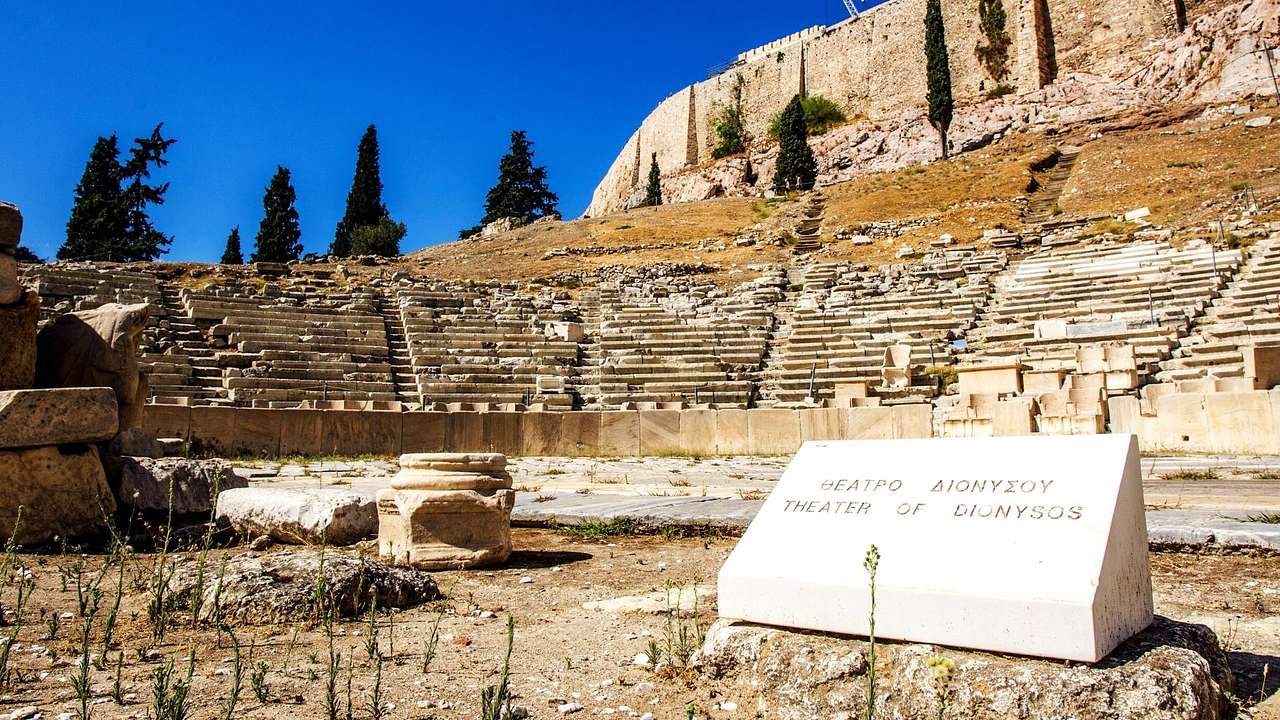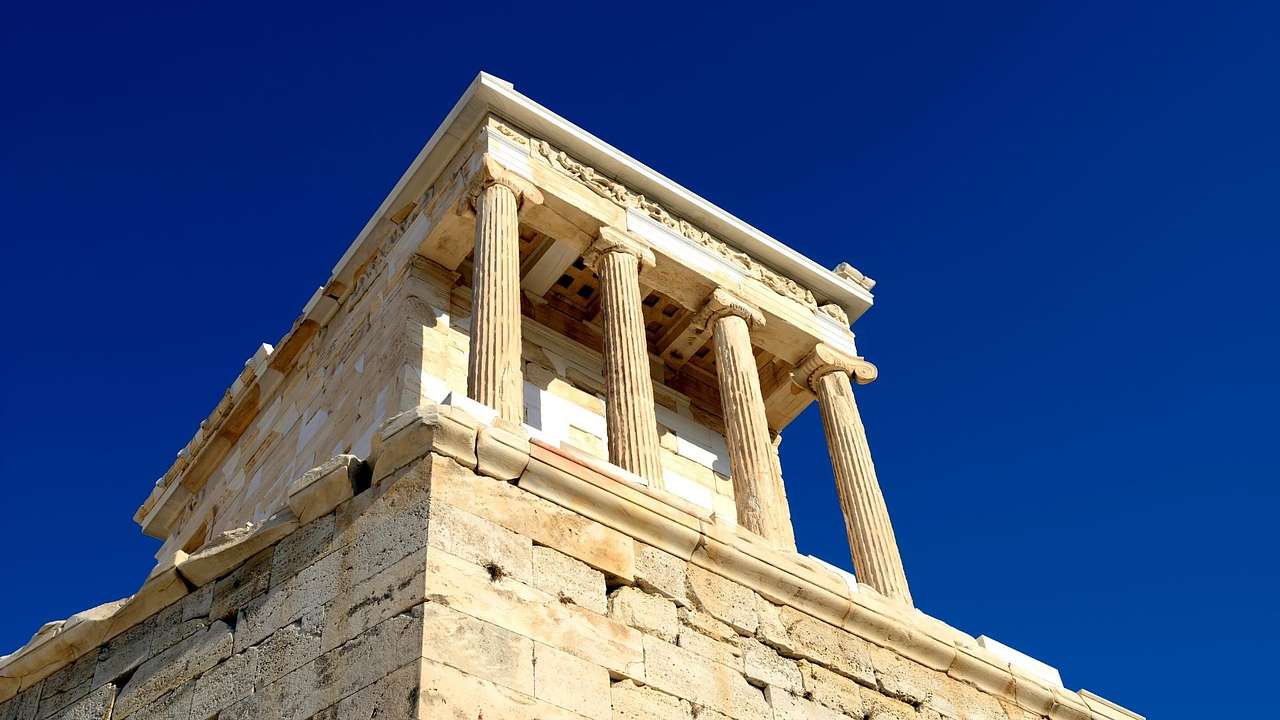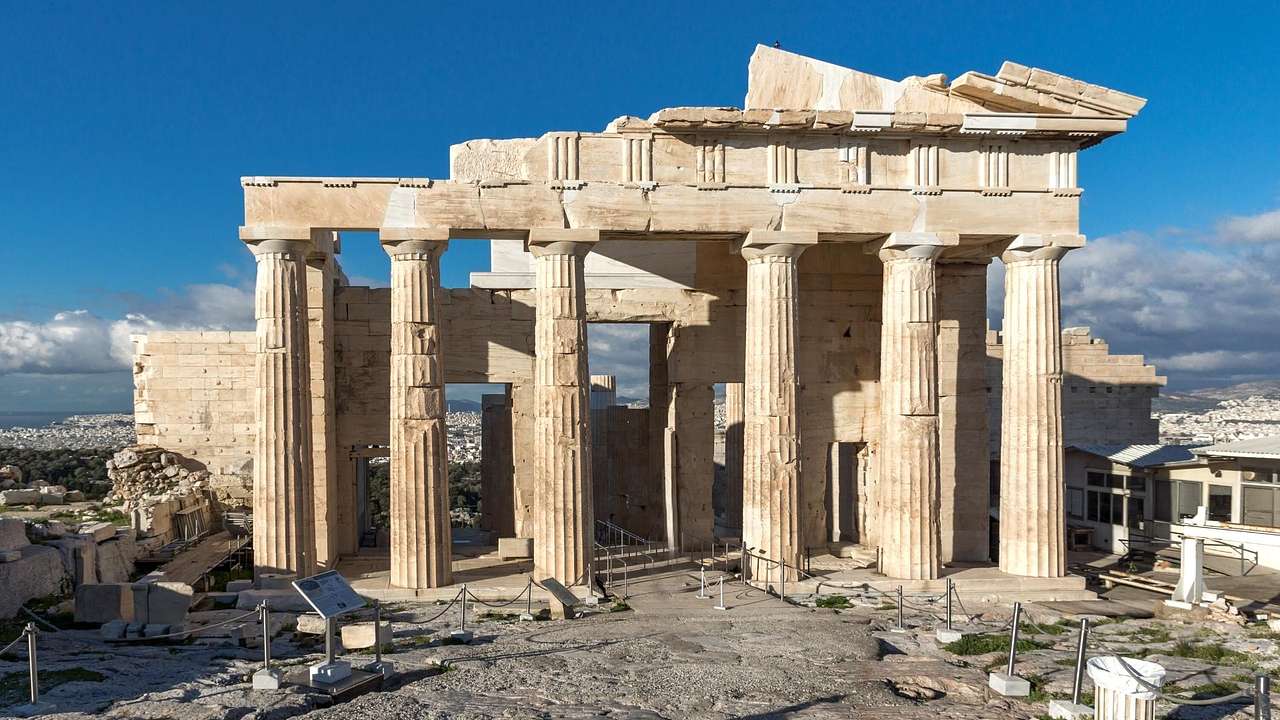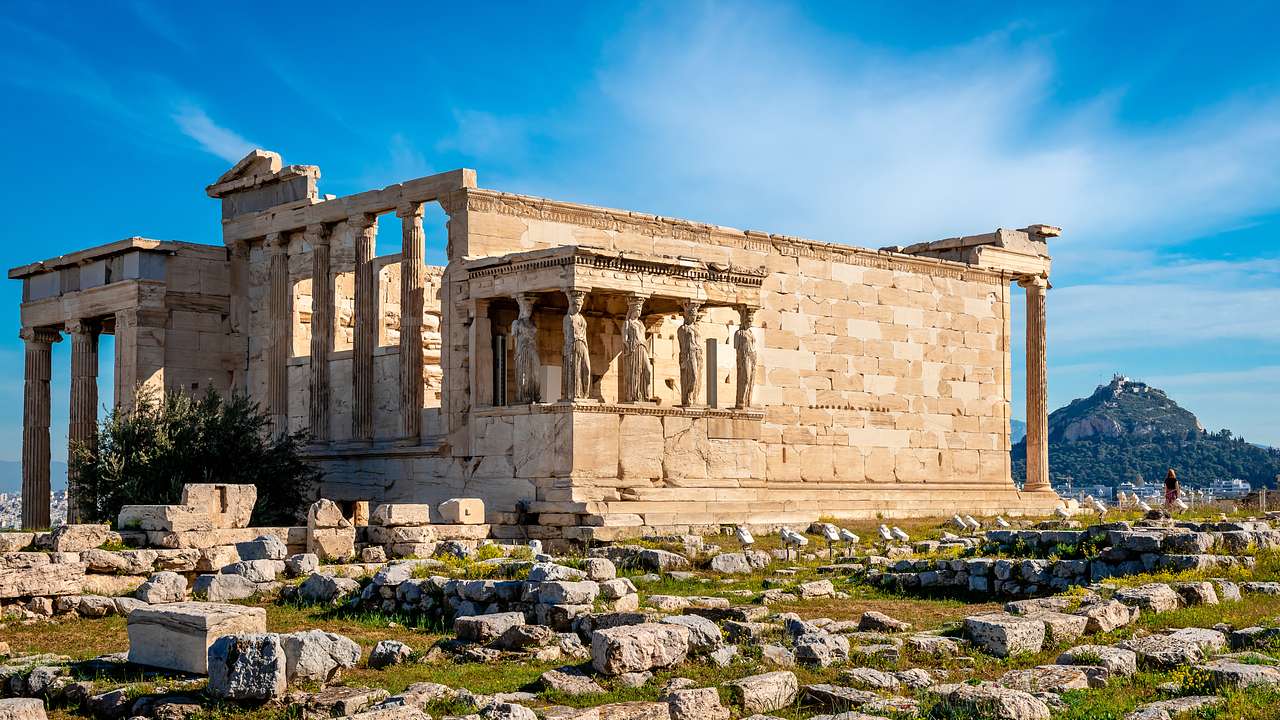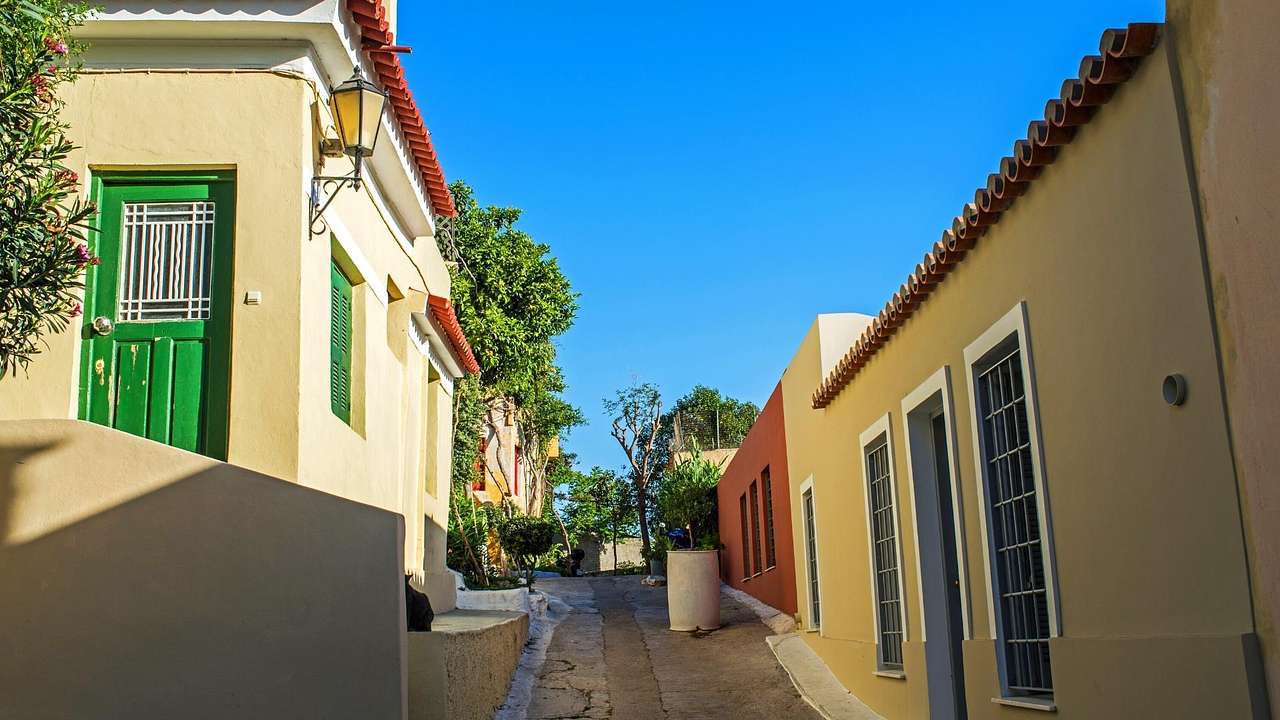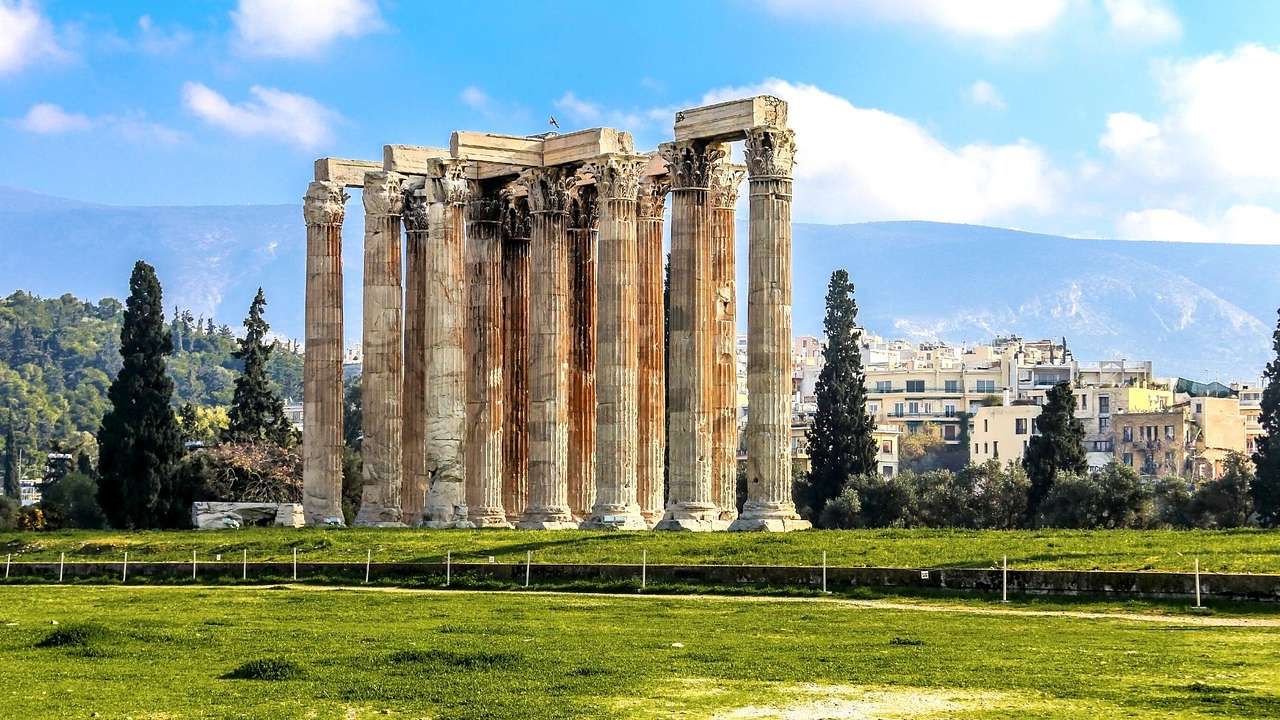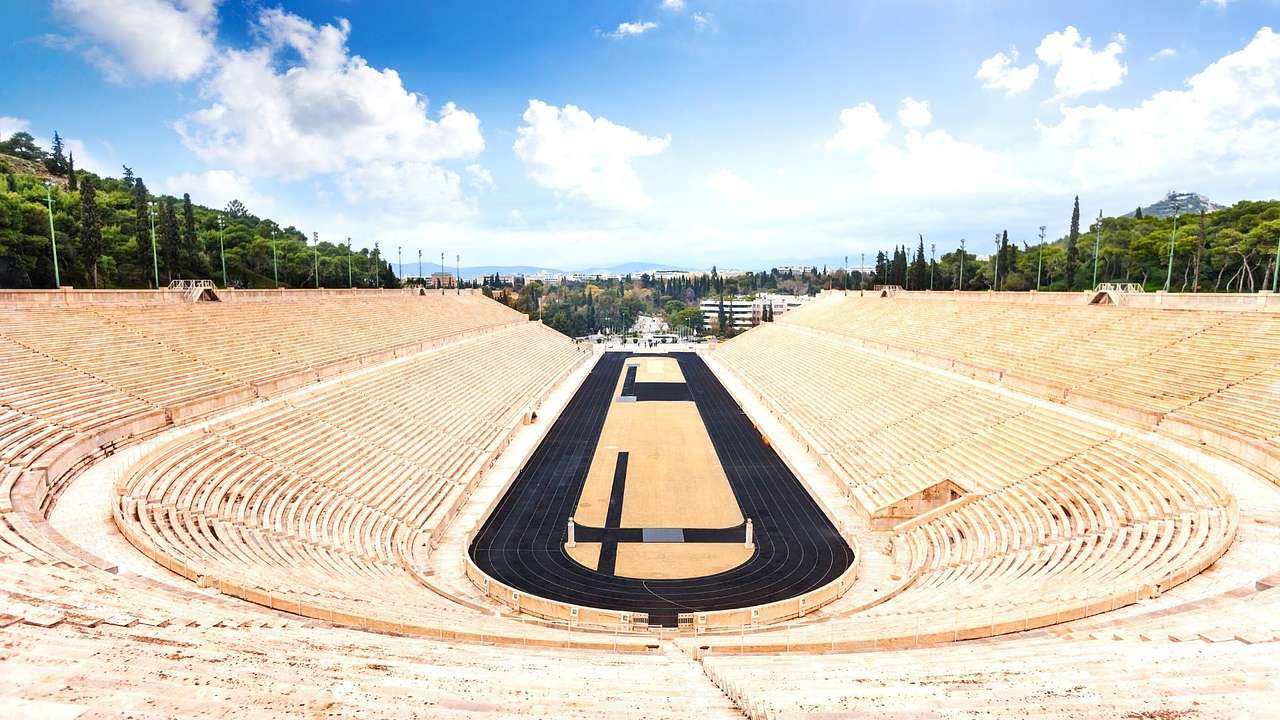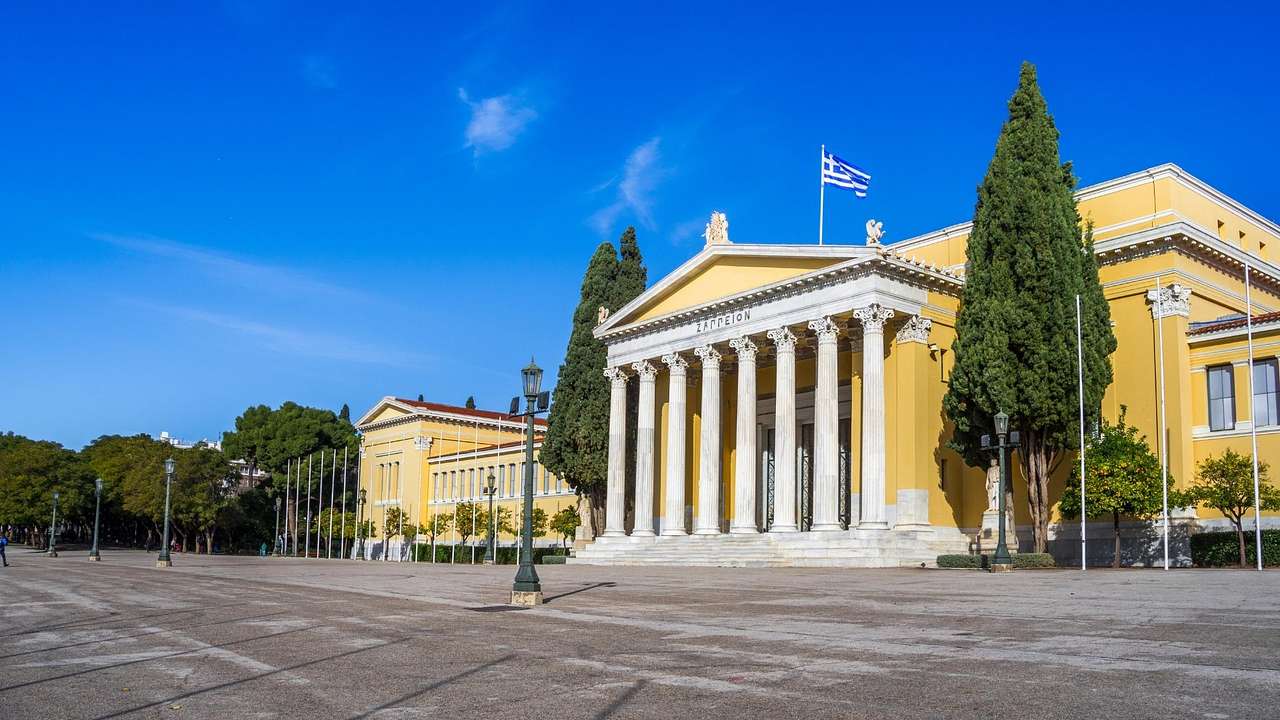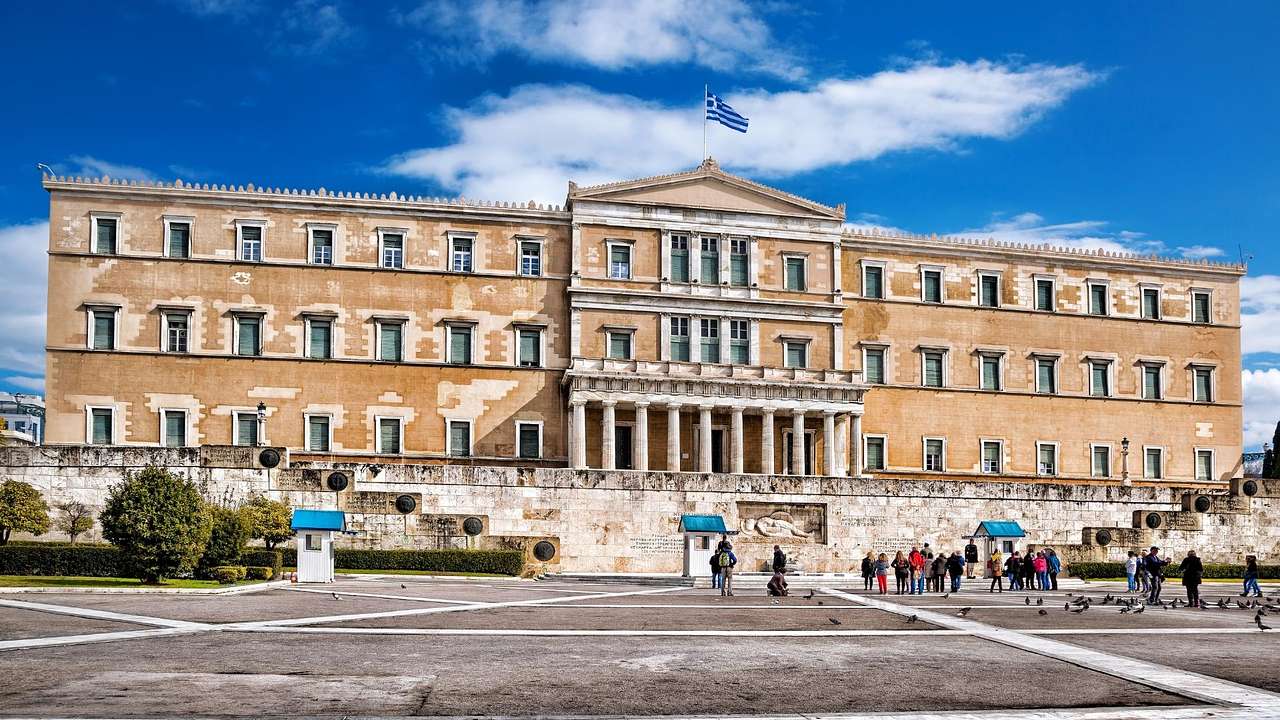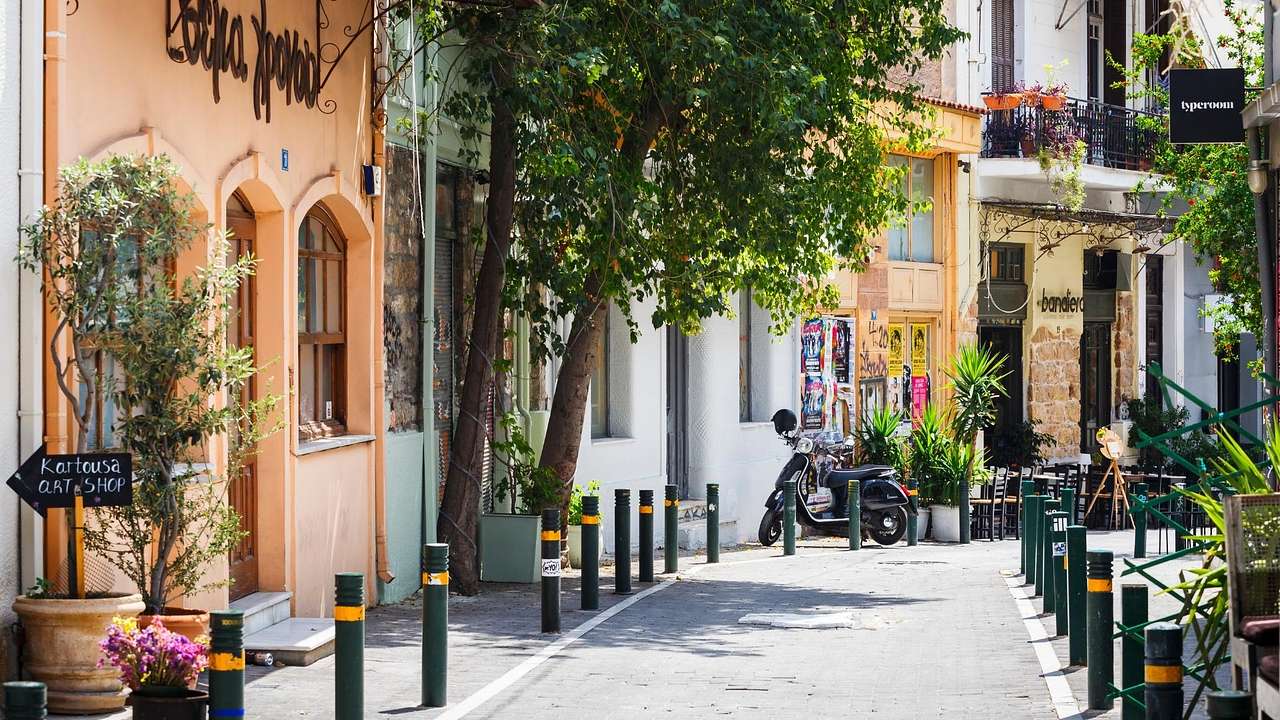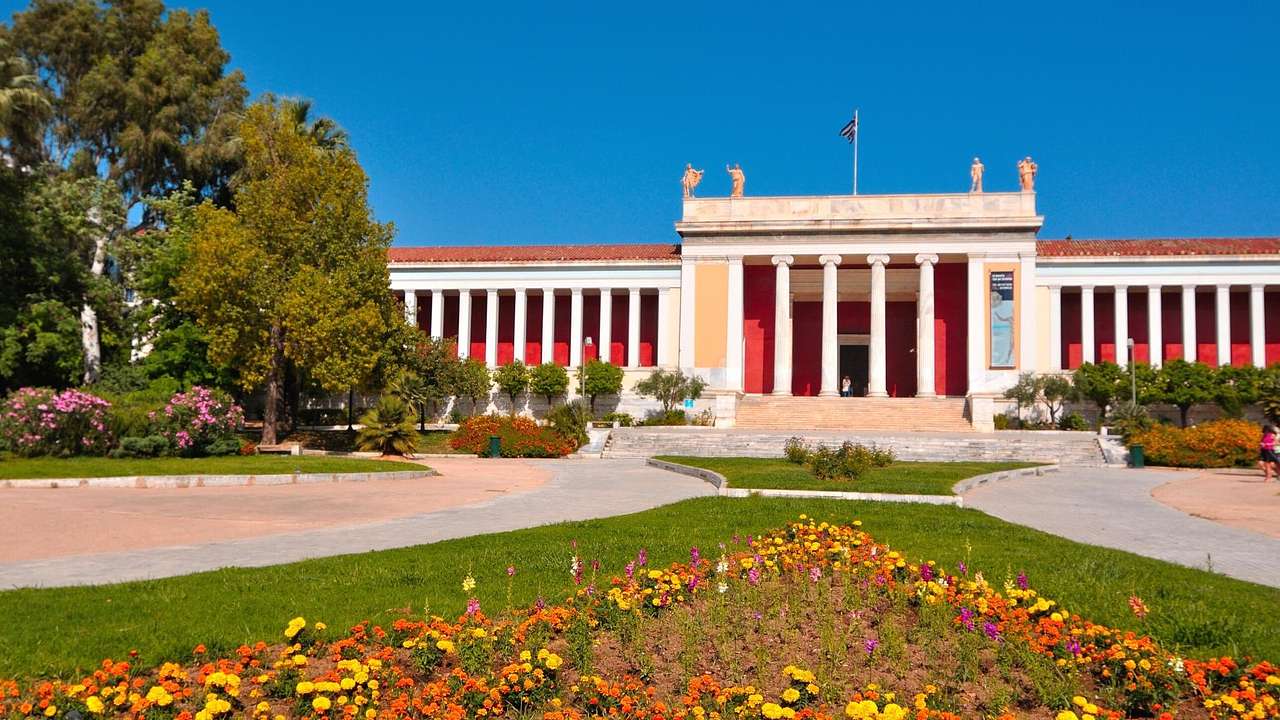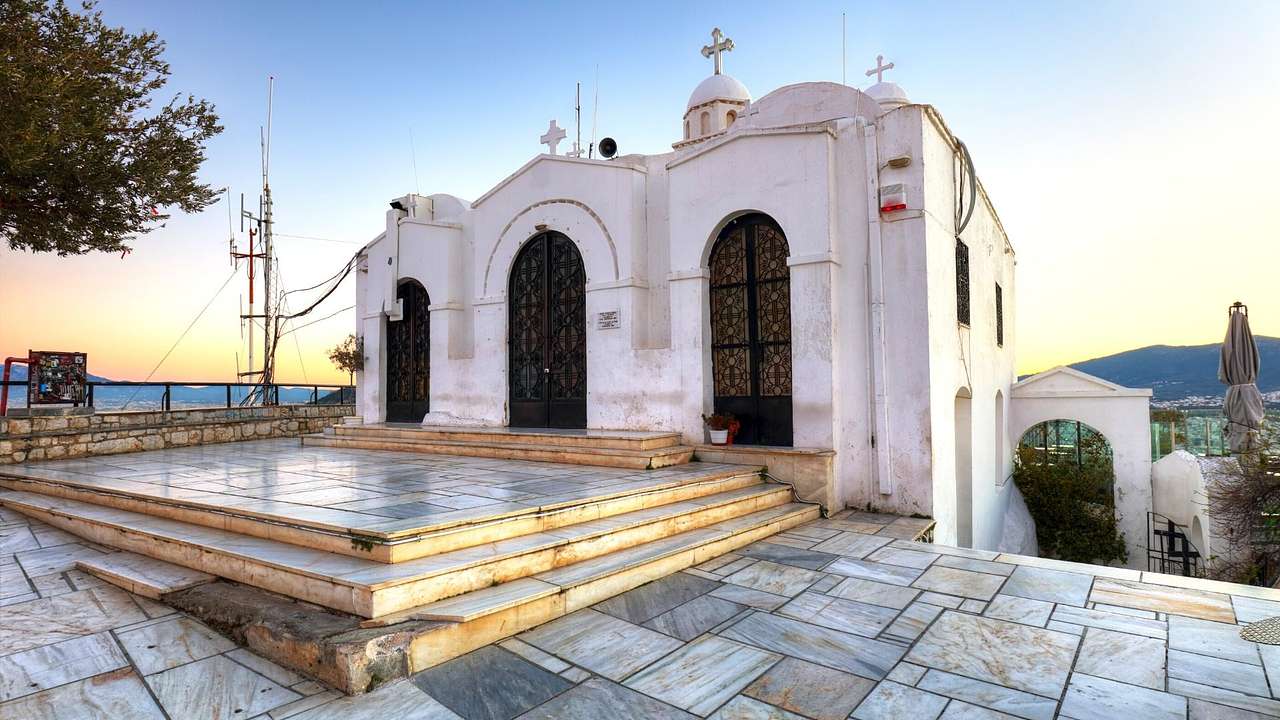2 Days in Athens Itinerary - Best Things to Do in Athens
Destguides may receive commissions from purchases made through affiliate links in this article.
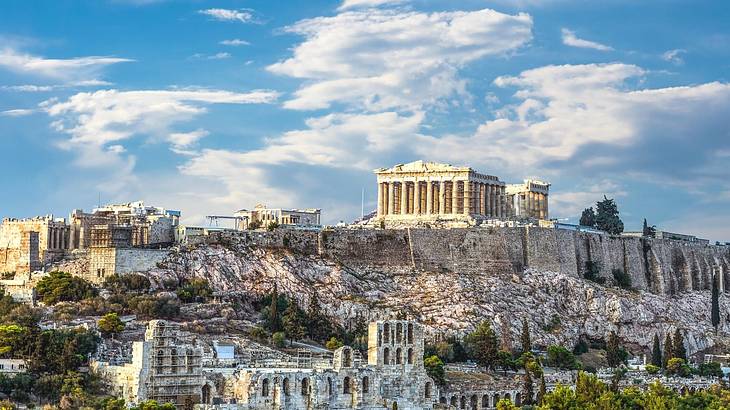
Are you thinking of visiting Athens but aren't sure if 2 days is enough? You may not be able to explore everything this historic city has to offer, but with careful planning, it's well worth a weekend trip!
This 2 days in Athens itinerary is designed to guide you through famous Greek landmarks and the best things to do in Athens, both old and new. It assumes a steady pace, but always be sure to go at your own speed and to stay anywhere you like a bit longer.
The best time to visit Athens is in the spring or fall, as it gets quite hot and crowded from June through September. However, the stops on this itinerary are open year-round, so don't hold back if summer or winter is the only time you can make it. Keep reading to learn what to see in Athens in 2 days!
Planning a last-minute trip to Athens?
When visiting Athens, book your accommodations and experiences before you go. Below are some top recommendations to get you started.
🏨 Top accommodations in Athens
- ATHENIAN YARD SUITES (under $100 USD a night)
- MARGARITA'S SUITES (rated highly)
- Grand Hyatt Athens (5-star rating)
☂️ Top tours and experiences in Athens
- Cape Sounion & Temple of Poseidon Sunset Tour (likely to sell out)
- Hydra, Poros, & Aegina Day Cruise With Lunch (likely to sell out)
- Delphi Day Trip With Licensed Guided Tour & Pickup (likely to sell out)
- Day Trip to Delphi & Arachova
- Acropolis, Parthenon & Acropolis Museum Guided Tour (rated highly)
Athens 2 Day Itinerary
Athens 2-Day Itinerary Video
Check out our highlights video of the stops covered in this Athens itinerary.
Athens 2-Day Itinerary Map
A map of Athens. Use the map to explore all the days and stops.
Archaeology and History
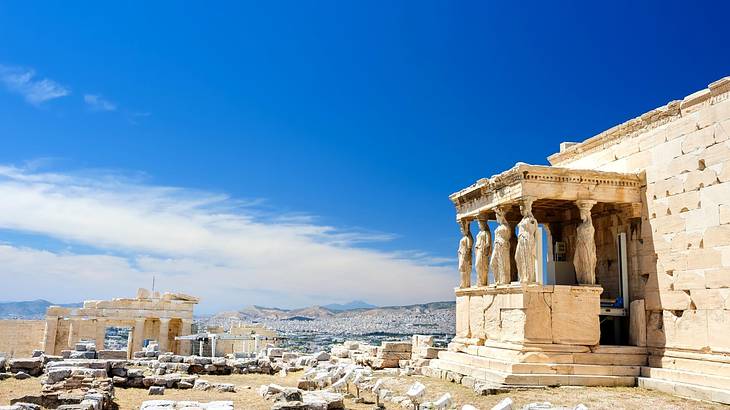
For your first day, you'll head to the Acropoli metro station to put yourself within walking distance of most of Athens' famous architectural wonders. The metro system connects the Athens airport to the city centre and other tourist areas, so getting here is easy.
You'll start at the Acropolis Museum to provide context for what you'll be seeing. Then, you'll head to the Acropolis itself to see the Theatre of Dionysus, Odeon of Herodes Atticus, Temple of Athena Nike, Propylaea, Parthenon, and Erechtheion. That may sound like a lot, but it's all part of the same complex.
Still, you'll spend quite a bit of your day at the Acropolis, so be sure to pack water and some snacks. This itinerary will build in some meal breaks, but it's always a good idea to be prepared. After touring the 2,500-year-old structures, you'll have a chance to grab some authentic Greek cuisine before walking through a pair of ancient markets and more.
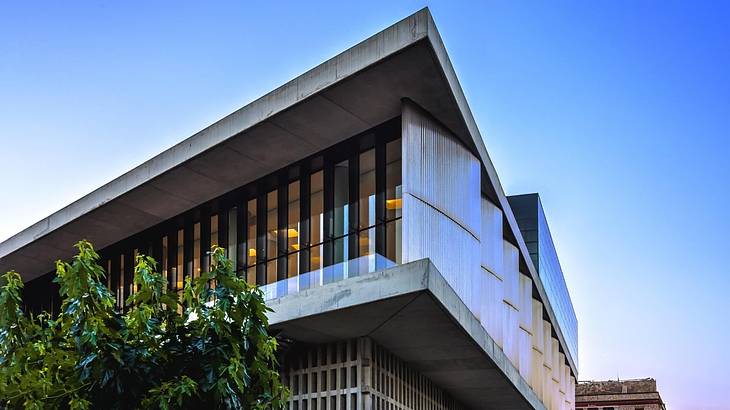
Acropolis Museum
The first Acropolis Museum was built in 1874 and was located on the Acropolis itself. It housed the stone sculptures and bronze fragments excavated from the monuments for preservation and exhibition.
By the 1980s, though, another century of excavations had filled up the limited space in the original museum, and plans for a new museum were begun. In 2007, after decades of international competition and construction, three tower cranes began the nerve-wracking task of transporting priceless artefacts 280 meters through the air to the new museum.
The top floor contains sculptures, pediment marble, and sections of frieze excavated from the Parthenon in their original arrangement. To give visitors context, there are clear views of the ancient Athenian structure they fell from, seen atop the Acropolis through the museum's floor-to-ceiling windows.
The levels below display the artefacts rescued from the Temple of Athena Nike, Erechtheion, Propylaea, and the surrounding slopes of the Acropolis. Buying tickets on-site can be a hassle and create long waits, so try to buy in advance or consider a tour that will allow you to skip the queue.
🏨 Places to stay near the Acropolis Museum
- Zoe's Studio (good value)
- Electra Palace Athens (rated very highly)
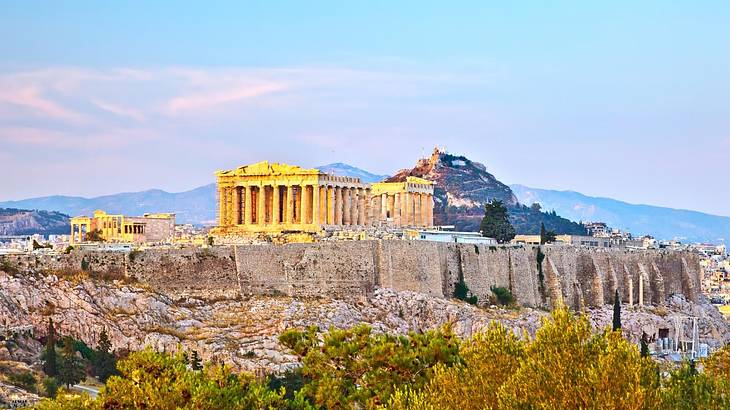
The Acropolis of Athens
The Acropolis is the name for the ancient citadel built on the hilltop that marks some of the oldest and most essential parts of Athens. It's the name for the whole archaeological area, and within it are some of the most recognizable and famous landmarks in the world.
To streamline your visit, consider signing up for a tour to skip the queue and learn more about the monuments you'll be visiting. All the monuments found here are within about a kilometre of one another but will be treated as different stops on this itinerary due to their individual significance.
The Acropolis is a must-see if it's your first time in Athens, especially if you're travelling through Greece with kids.
🏨 Places to stay near the Acropolis of Athens
- Grand Hyatt Athens (rated 5-stars)
- Melia Athens (relaxing pool)

The Theatre of Dionysus
Your first stop on your walk up the Acropolis is the Theatre of Dionysus, an open-air tribute to the Greek god of wine, pleasure, and festivity. At its height in the 4th century BCE, the theatre could hold up to 14,000 Athenian merrymakers.
The Theatre of Dionysus was built into the south slope of the Acropolis, fanning out from a semicircular stage. Upon this stage, citizens of Athens could watch performances of Oedipus Rex by Sophocles or one of Euripides' tales of the Trojan War, already ancient history for this early civilization.
🏨 Accommodations in close proximity to the Theatre of Dionysus
- Athens Connection Apartments (mid-range)
- Amalia Hotel Athens (highly rated)
☂️ Visit the Theatre of Dionysus on a tour
- Athens Half-Day Sightseeing Tour (popular with most)
- Athens Acropolis & Parthenon Walking Tour
The Odeon of Herodes Atticus
Continuing up the Acropolis, you'll next reach the Odeon of Herodes Atticus. Unlike the Theatre of Dionysus, which entertained Athenians through their golden age, this theatre was built in 161 CE after it had come under Roman rule.
Odeons were typically built for musical performances, and this one was large enough to serenade about 5,000 guests. Amazingly, the venue was restored in the 1950s and is still used to host modern concerts and festivals.
🏨 Accommodations close to the Odeon of Herodes Atticus
- Niche Hotel Athens (rated 4-stars)
- Delice Hotel - Family Apartments
☂️ See the Odeon of Herodes Atticus on a tour
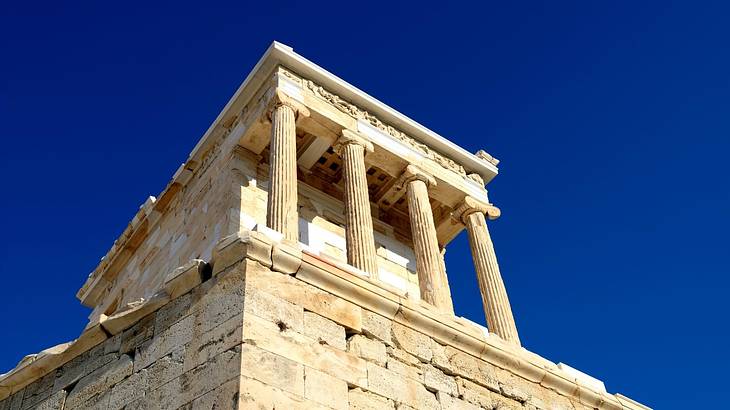
Temple of Athena Nike
Next on your walk, you'll find the famous Temple of Athena Nike. Athena was the most important of the Greek gods and goddesses for Ancient Athenians and is the source of their city-state's name. This temple was built around 420 BCE and is the first of the four major monuments on the Acropolis hilltop.
Athena was the goddess of wisdom and war, and when paired with Nike, the goddess of victory, she represented triumph in battle. The bold placement of this temple at the edge of a cliff is intentional, allowing the divine defender of Athens to keep watch over her city.
🏨 Accommodations nearby the Temple of Athena Nike
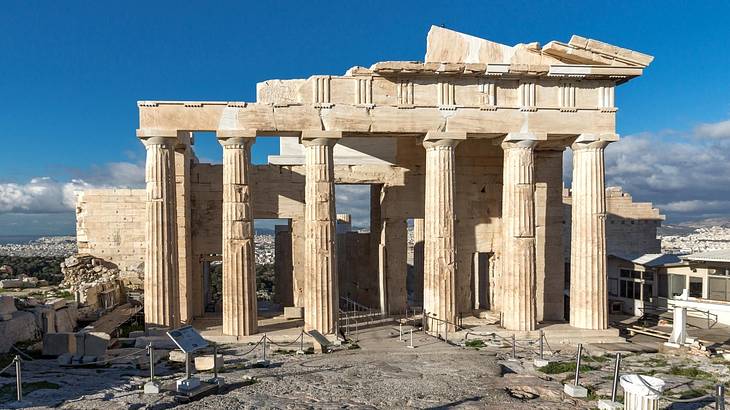
Propylaea
Just beside the Temple of Athena Nike, you'll find the Propylaea. This European landmark served as the grand entryway to the Parthenon. A "propylaea" is the name the Greeks gave to any entryway, but this one holds special significance as "The Propylaea."
Despite being a gateway to something else, this construction is a wonder unto itself. Its design succeeds in striking visitors with awe as they approached Athena's most important place of worship.
It was built across the only traversable pathway to the plateau on which the Parthenon sits, ensuring all guests were put in the proper frame of mind before reaching the temple.
🏨 Accommodations in close proximity to the Propylaea
☂️ Explore the Propylaea on a tour
- Mythology Tour for Families (highly rated)
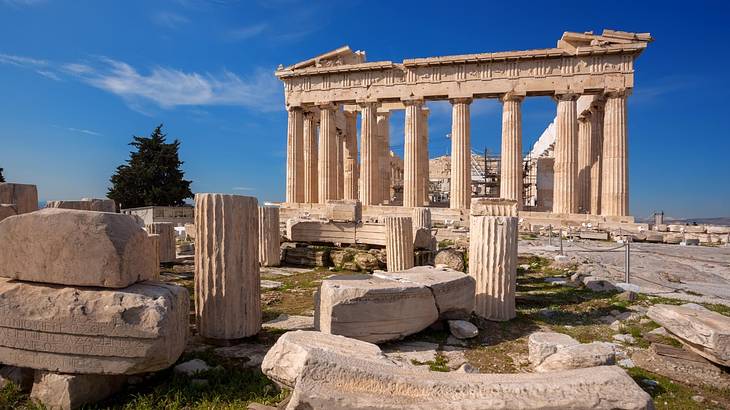
Parthenon
After passing the Propylaea, brace yourself for one of the most famous attractions in the world that is sure to be a highlight of your Athens trip. It was built about 2,500 years ago and was the main temple for Athena. The Parthenon was built to replace an earlier temple destroyed by the Persian invasion.
This version was, in turn, nearly destroyed when the ruling Ottomans used it to store gunpowder during a war with the Venetians in the 17th century. Even in its current ruin, it dominates the Acropolis hilltop, with millions of people coming each year to marvel at its scale.
🏨 Accommodations near the Parthenon
☂️ Visit the Parthenon on a tour
- Acropolis, Parthenon, & Acropolis Museum Guided Tour (usually sells out)
- Acropolis - Entrance Ticket & Guided Walking Tour (highly rated)
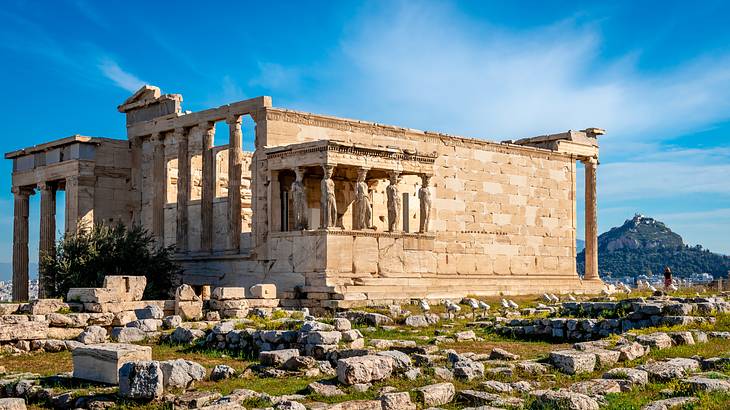
Erechtheion
Beyond the Parthenon, there is still one more major monument to see on your trip to the Acropolis of Athens. This, the Erechtheion, is easily recognizable from its six stone maidens supporting one of its outer roofs.
This temple honours many important mythical figures from ancient Greece. The name comes from an ancient King of Athens named Erechtheus, who may have at one point been buried here. Additionally, it is a temple for both Athena and Poseidon, the god of the sea.
According to myth, the two deities held a competition to become the patron god of Athens. Poseidon began, striking his trident into the ground to produce a spring.
Taking her turn next, Athena planted a seed from which an olive tree spouted instantly. Seeing how it grew from rocky terrain to produce valuable fruit, they declared Athena the winner.
🏨 Accommodations nearby Ερέχθειο
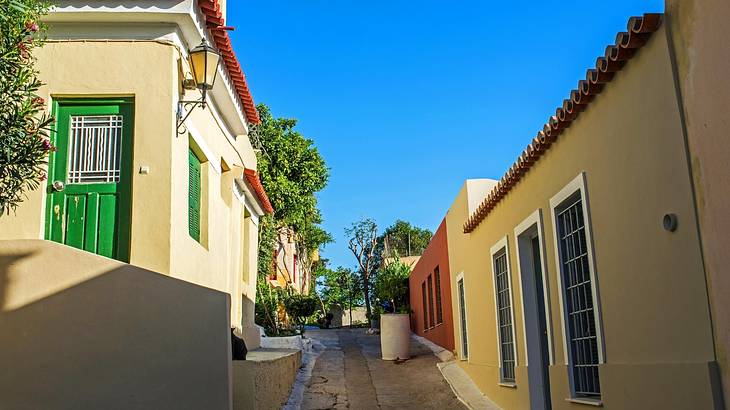
Plaka and Anafiotika
After the Erechtheion, it will be time to drop down from the Acropolis to get a late lunch. Greek food is one of the world's most unique and popular cuisines, so planning places to stop and enjoy it is a must-do in Athens, Greece. The best place for this will be Anafiotika, found in the beautiful Plaka neighbourhood.
Winding through Anafiotika's narrow stone streets and whitewashed buildings, you'll wonder if you've somehow teleported to a nearby Greek island. Most importantly, though, you'll find great spots to eat.
Yiasemi Cafe Bistrot or the cleverly named Anafiotika Cafe are great options, but regardless of where you stop, take your time and relax. There are only two more stops for today, so make sure you're feeling replenished and ready to enjoy them.
🏨 Accommodations nearby Anafiotika
☂️ Discover Anafiotika on a tour
The Roman Agora
Every ancient Greek city-state had an agora (similar to a public square) that served as a gathering place for its citizens. It was the nerve centre for each city's commerce, news, and gossip. The next stops on your itinerary will take you through two different agoras, each serving the city centre to varying points in history.
Coming from your food stop in Anafiotika, you'll reach the Roman Agora first. Also called the Roman Forum of Athens, it was built during the reigns of Julius and Augustus Caesar and later expanded by Emperor Hadrian. Though in ruins now, you can still trace the path of the marble colonnade that marked the perimeter of the 100-square-meter marketplace.
Older yet more intact is the Tower of the Winds building on the Agora's western side. It was built as a water clock and sundial in the 2nd century BCE, long before the area around it was converted into the Roman Agora.
🏨 Accommodations nearby the Roman Agora of Athens
- Amazon Hotel (good value)
- 360 Degrees Hotel (well-regarded)
☂️ Explore the Roman Agora of Athens with a tour
The Ancient Agora of Athens
After exiting the Roman Agora, you'll make your way along Adrianou Street to the Ancient Agora of Athens. This ancient archaeological site was used as a marketplace for 5,000 years. It was where Athenians received news about the Trojan War, and later about the stand of 300 Spartans against the Persians. It was also where the philosopher Socrates questioned passing experts until they agitatedly admitted they knew nothing.
In addition to being older and more significant than the Roman Agora, the Ancient Agora is far grander. It served not just as the marketplace and town square but also as a residential area and the site of monuments and temples. Two famous monuments still found here are the Odeon of Agrippa and the Temple of Hephaestus, the Greek god of fire, metal art, and craftsmanship.
🏨 Places to stay near the Ancient Agora of Athens
- The Pinnacle Athens (top-rated)
- Nsplace
☂️ Visit the Ancient Agora of Athens with a tour
- Acropolis & Acropolis Museum Guided Walking Tour (often praised)
Areopagus Hill
Next to the Ancient Agora is Areopagus Hill, offering one more chance for a stunning view of the Parthenon. Its name means Mars Hill for the god of war, but it's more well-known as the place of the Apostle Paul's sermon on his mission to spread Christianity in Europe.
From here, you can walk about ten minutes to the Theseio metro station or find other transportation back to your lodgings. Rest up, your 48 hours in Athens itinerary is still only halfway over!
🏨 Places to stay close to Areopagus Hill
- Herodion Hotel (4-star rating)
- A For Athens Hotel
Modern and Contemporary Athens
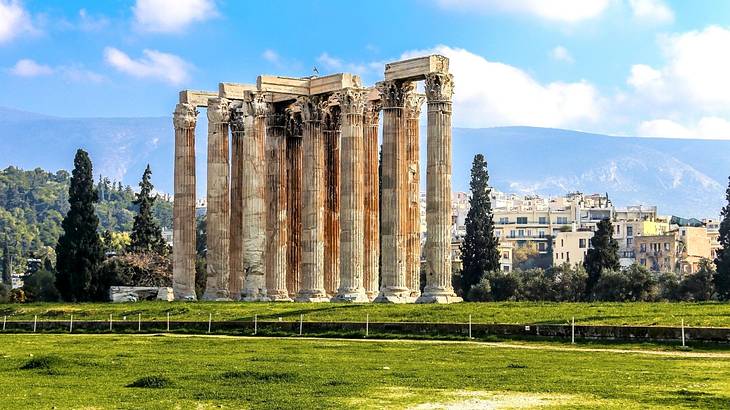
With many of the Athens bucket list places now covered, your second day will take you through some of the city's less famous but equally impressive sites.
For a place that reached its golden age 2,500 years ago, the term "modern" must sometimes be taken loosely to mean things from the most recent millennium. This day will also provide more glimpses into what contemporary Athens has to offer.
You'll start with the last of the major ancient monuments, Hadrian's Arch and the Temple of Olympian Zeus, and the Panathenaic Stadium. From there, you'll stroll through the National Garden to Syntagma Square and the Monastiraki Flea Market.
The final Athens must-see places on this itinerary will be the National Archaeological Museum and Mount Lycabettus. Along the way will be some food recommendations, so read on to start getting more acquainted with modern and contemporary Athens!

Temple of Olympian Zeus and Hadrian's Arch
Just a five-minute walk from the Acropoli metro stop, you'll discover The Temple of Olympian Zeus (or the Olympieion). At the entrance, you'll also see Hadrian's Arch, built around 130 CE in commemoration of Roman Emperor Hadrian's symbolic status as a "citizen of Athens".
After passing the arch, you'll see the temple dedicated to Zeus, ruler of Olympus and king of the Greek gods. It took 600 years to reach its final form and was completed in the 2nd century CE. Sixteen of the original 104 columns remain on-site, though one fell during an earthquake in the 19th century.
🏨 Nearest accommodations to the Temple of Olympian Zeus
- ATHENIAN YARD SUITES (good value rooms)
- MARGARITA'S SUITES (scored highly by guests)
☂️ See the Temple of Olympian Zeus on a tour

Panathenaic Stadium
Next on the itinerary, you'll visit the nearby Panathenaic Stadium. Both ancient and modern, it's an important stop when you only have 2 days in Athens, Greece.
The Panathenaic Stadium was originally built to hold 50,000 people during the 2nd century CE but later fell into ruin along with the rest of the Roman Empire. It was excavated and restored during the 19th century and was where the first modern Olympic Games were hosted in 1894.
More recently, the stadium was where the 2004 Summer Olympics held the archery competitions, and in 2011, it was the location for the opening ceremony of the Special Olympics World Summer Games. Concerts and other competitions continue to be hosted here, though most days, the stadium is reserved for tourism.
🏨 Stay near the Panathenaic Stadium
- GREA Ardittos (good value)
- Nikis Penthouse (loved by guests)
☂️ Visit the Panathenaic Stadium with an experience
- Athens Half-Day Private City Tour (often fully booked)
- Athens & Piraeus Private Tour For Groups (rated highly)
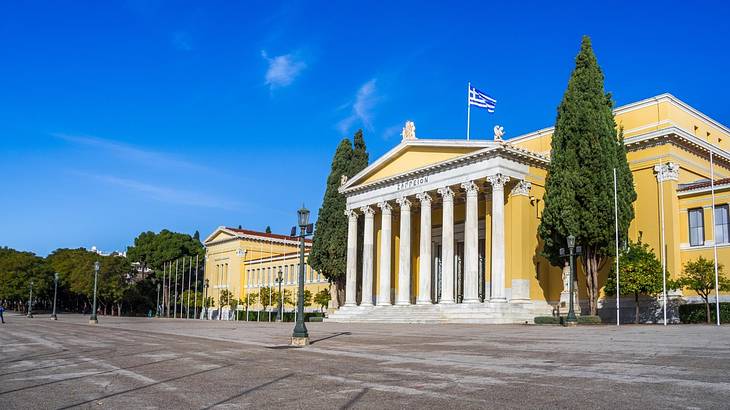
National Garden and Zappeion Hall
After leaving Panathenaic Stadium, you'll make your way toward Syntagma Square by way of the National Garden. Formerly the Royal Garden during the Greek monarchy, this lush park in the city centre contains more than 7,000 trees and 519 different plant species. Its fountains, playgrounds, and walking trails make it a great spot to stop and have a picnic before moving on.
At the edge of the National Garden is the Zappeion Hall, constructed during the 19th century to support the first Olympic games, where it was used for fencing. Today, it's primarily used for official state meetings and ceremonies. Together, the National Garden and the grounds of the Zappeion Hall create a twenty-four-hectare oasis.
🏨 Accommodations close to the National Garden
- Electra Metropolis (5-star rating)
- Hotel Lozenge (4-star rating)
☂️ Visit the National Garden with a tour
- Athens Bike Tour - E-Bike or Regular BikeOptional Acropolis Visit (often fully booked)
- Best of Athens Small-Group Segway Tour (rated very highly)
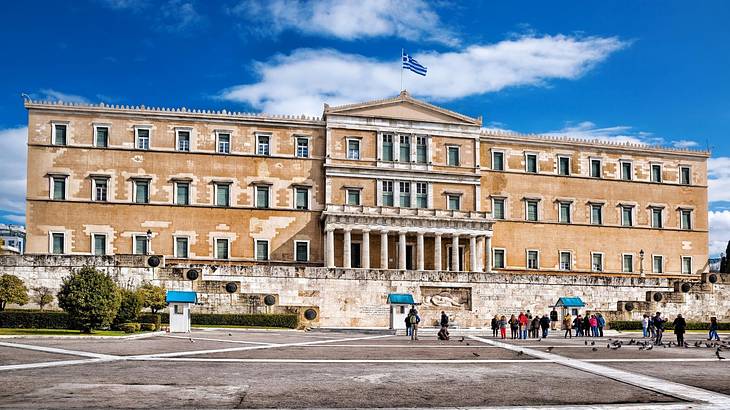
Syntagma Square
Passing the modern Greek Parliament building on your way out of the National Garden, you'll pop out into Syntagma Square. In addition to being one of the most popular and central places in Athens, it's also very important to the modern-day nation of Greece.
Despite being known as the birthplace of democracy, Greeks spent the next several millennia under the rule of Roman, Byzantine, and Ottoman leaders. Syntagma means "Constitution," and the square memorializes the Greek return to self-rule.
Today, people from all over the world fill the square to see its monuments and statues and to watch the traditional changing of the guards each hour at the Tomb of the Unknown Soldier.
🏨 Stay nearby Syntagma Square
☂️ Visit Syntagma Square with an experience

Monastiraki Square and Monastiraki Flea Market
From Syntagma Square, it's about a ten-minute walk to Monastiraki Square. Along the way, you'll get a better feel for the modern-day city of Athens. There are also some important landmarks in Athens you can take photos of, such as the Historic Church of Pantanassa and the Tsisdarakis Mosque. You will also see the beautiful Roman ruins of Hadrian's Library.
That said, the most popular thing to do here is shopping. Just off the square, explore the Monastiraki Flea Market and some pedestrian shopping streets. If you're looking for affordable shopping, this is the perfect place to buy souvenirs, clothes, and local goods. On Sundays, the market carries more traditional and vintage goods from Athens and the surrounding regions.
🏨 Nearest accommodations to Monastiraki
☂️ Explore Monastiraki with a tour
- Greek Cooking Class & Dinner on a Rooftop (frequently earns a five-star rating)
- Private Three-Hour City Tour on Eco-Friendly Tuk Tuk

Psyri
After shopping or picking up souvenirs for people back home at the flea market, it will be a good time to grab some late lunch. Adjacent to Monastiraki Square is the vibrant neighbourhood of Psyri, known for its nightlife but also packed with cafes and restaurants.
While in this bohemian district, keep your eyes peeled for its poignant, colourful murals covering most alleyways and thoroughfares.
Before leaving, you should also visit the spice market on Evripidou Street to complete your Athens food tour. It's nicknamed the city's stomach, and its diverse aromas demonstrate that Greece is a crossroads of many cultures.
🏨 Stay nearby Psyri
☂️ Join a tour to see Psyri
- Greek Cooking Class in Athens Including Rooftop Dinner With Acropolis View (frequently earns a five-star rating)
- Greek Food Walking Tour in Athens (very popular)

National Archaeological Museum
The National Archaeological Museum is the next stop on this 2 day Athens itinerary. It's about a twenty-five-minute walk from the Pysri neighbourhood, so you should consider taking the metro or other transportation if you want to give your feet a rest. Buying your museum entry ticket in advance is also a good idea!
However you get here, this museum is worth it. Ancient Greek civilization spanned thousands of years and stretched far beyond the boundaries of the modern-day country of Greece. The 11,000 artefacts found here provide some of the deepest glimpses into the development of human societies, and it's considered one of the most important museums in the world.
🏨 Accommodations near the National Archaeological Museum
- Colors Hotel Athens (scored highly by guests)
- Radisson Blu Park Hotel Athens (exceptional rating)
Atitamos Resaurant
To celebrate your near completion of this itinerary, treat yourself to dinner at a traditional Greek restaurant called Atitamos. It's a short, 7-minute walk from the Archaeological Museum, putting it in the sweet spot of being close but still off the beaten path.
Inside, you'll find a comfortable, familial Greek atmosphere. The seafood, stews, and other traditional dishes served here represent Greece's delicious position between the Mediterranean Sea and the Middle East.
🏨 Places to stay near Ατίταμος
- Athens City View Urban Suites
- Parnon Hotel (good value)
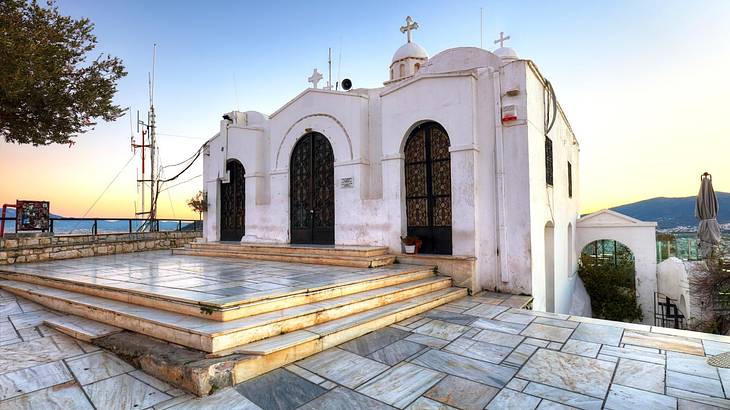
Mount Lycabettus
The last stop, Mount Lycabettus, is the highest point in the city centre. Chances are you've been looking at it while visiting all the other top things to do in Athens, and the best way to reach its summit is via the funicular.
You can reach the top on foot as well, but after two days of walking between all the things to see in Athens, a ride in a cable car is likely the way to go. Alternatively, you can get a private car to escort you to and around the magnificent views, the historic church and the savoury restaurant at the top.
☂️ Visit Mount Lycabettus on a tour
- Tuk Tuk Athens Complete City Center Tour - 100 Electric 3 Hours (often praised)
🏨 Stay in close proximity to Mount Lycabettus
- Hotel Grande Bretagne (loved by guests)
- St George Lycabettus Hotel (5-star rating)
In Summary
One of the unique characteristics of Athens is that most of its top attractions can be reached on foot. Trying to squeeze in all the top Athens sites in just two days may seem daunting, but this itinerary will ensure you can get it done!
Athens is one of the most iconic cities in the world, and even if you don't make it to each stop listed above, you won't regret going. You can always make changes so that this is the perfect Athens itinerary for you.
Give us feedback about this article
More visual stories related to this article:
Want to keep exploring?
Subscribe for discounts on tickets and hotels and our latest guides.
Thank you for subscribing
We will be in touch soon with discounts on tickets and hotels and our latest guides.
Want to keep exploring?
Subscribe for discounts on tickets and hotels and our latest guides.
Thank you for subscribing
We will be in touch soon with discounts on tickets and hotels and our latest guides.

